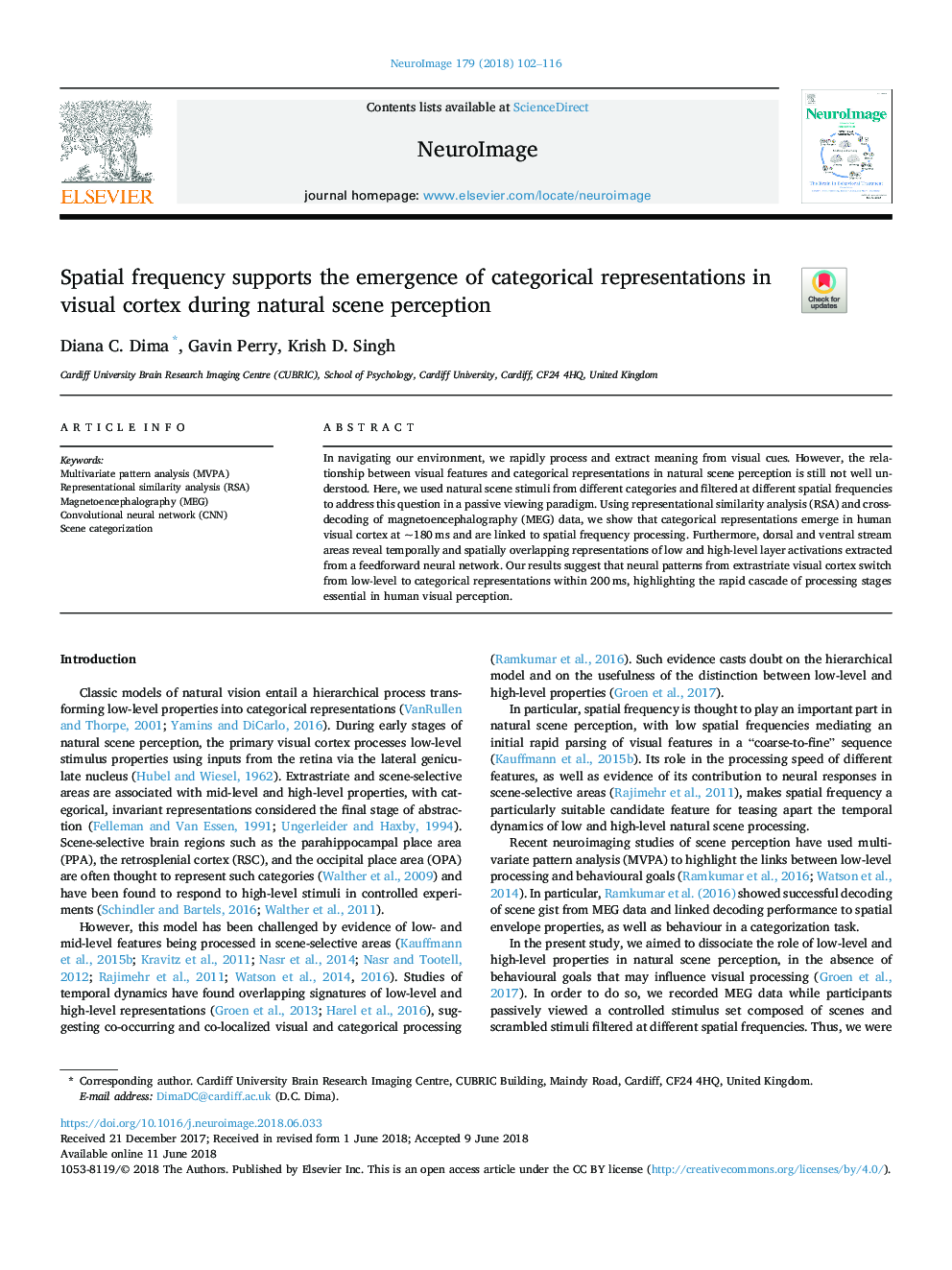| Article ID | Journal | Published Year | Pages | File Type |
|---|---|---|---|---|
| 8686687 | NeuroImage | 2018 | 15 Pages |
Abstract
In navigating our environment, we rapidly process and extract meaning from visual cues. However, the relationship between visual features and categorical representations in natural scene perception is still not well understood. Here, we used natural scene stimuli from different categories and filtered at different spatial frequencies to address this question in a passive viewing paradigm. Using representational similarity analysis (RSA) and cross-decoding of magnetoencephalography (MEG) data, we show that categorical representations emerge in human visual cortex at â¼180â¯ms and are linked to spatial frequency processing. Furthermore, dorsal and ventral stream areas reveal temporally and spatially overlapping representations of low and high-level layer activations extracted from a feedforward neural network. Our results suggest that neural patterns from extrastriate visual cortex switch from low-level to categorical representations within 200â¯ms, highlighting the rapid cascade of processing stages essential in human visual perception.
Keywords
Related Topics
Life Sciences
Neuroscience
Cognitive Neuroscience
Authors
Diana C. Dima, Gavin Perry, Krish D. Singh,
